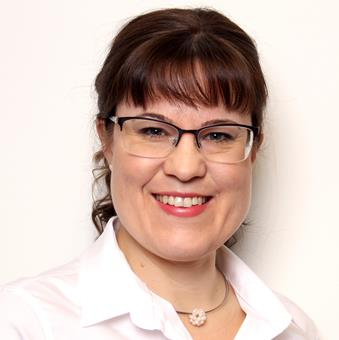Malin Lindqvist Appell conducts research into several enzymes that can influence the effect of thiopurine treatment. Photo credit Kajsa Juslin
A family of drugs known as thiopurines that kills cancer cells was developed in the 1950s.
“Treating children with acute leukaemia, which is a type of blood cancer, with a thiopurine drug had an extremely good effect on survival. Some patients, however, experienced fatal side effects and it was not at the time understood why”, says Malin Lindqvist Appell, associate professor in the Division of Drug Research at Linköping University.
In the patients who suffered severe side effects, the body was not able to form new blood cells. Their immune system became so compromised that many patients contracted blood poisoning, which killed them. This remains even today a feared side effect of thiopurine treatment, but advances in research mean that it can nearly always be avoided. Photo credit Kajsa Juslin
An explanation for the fatal adverse reactions was discovered during the 1970s, when scientists identified an enzyme in the body that inactivates the drug. This enzyme was given the name thiopurine methyltransferase, or TPMT. Those who experienced severe side effects of the thiopurine treatment had a low activity of the enzyme, TPMT. We now know that approximately one in ten people has a variant of the gene coding for TPMT that causes a low degree of conversion of thiopurine drugs. One person in 300 lacks the enzyme completely, and may die if given a normal dose of a thiopurine drug.
When Malin Lindqvist Appell embarked on her research career in 1999, the professor in the research group she joined, Curt Petersson, was laying the foundations for TPMT analysis. As a consequence, their lab in Linköping became the leading lab in Sweden.
“TPMT is one of few examples in the field of pharmacogenetics where there is an extremely clear link between genetics, clinical effect, and adverse effects. This is why it has been possible to introduce the analysis into clinical procedures in healthcare”, says Malin Lindqvist Appell.
Today it is widely accepted within the healthcare system that TPMT should be analysed before starting treatment with a thiopurine drug. The largest group of patients is adults and children with inflammatory bowel disease, where the thiopurine drug reduces the activity of immune cells and inhibits inflammation. Furthermore, thiopurine drugs remain a cornerstone in the treatment of a certain type of leukaemia in both children and adults.
“The fundamental idea of our research is to investigate both genetic variants, known as the genotype, and enzyme activity. In some cases, these do not agree with each other. It may be that the enzyme activity is low, even though we do not see any of the common genetic variants that are routinely screened for. In such cases, we read the complete gene sequence, from start to finish. This has allowed us to discover 8-9 new variants of the TPMT gene in individuals with low TPMT activity”, says Malin Lindqvist Appell.In the research lab, scientists search for unknown genetic variants that show whether a person requires a lower dose of a drug. Photo credit Kajsa Juslin
The lab also receives patient samples from other labs that carry out TPMT analysis, and sequences the complete gene in cases in which the genotype and enzyme activity do not agree.
The body converts thiopurine drugs to metabolites, similar compounds with slightly different chemical structures. These metabolites are confusingly similar to the building blocks of DNA. When metabolites are incorporated into the DNA molecule, the cell can no longer divide and dies.
“We have developed an analysis method to follow the levels of metabolites as the thiopurine treatment of inflammatory bowel disease progresses. This is a tool that is used in the healthcare system to adjust the dose more accurately, such that the treatment has as strong an effect as possible”, says Malin Lindqvist Appell.
A major new project is just getting under way in which Malin will collaborate with gastroenterologist Henrik Hjortswang, and the Laboratory of Clinical Pharmacology at Region Östergötland, in an attempt to further improve the tool.
“We currently measure the levels of metabolites inside the cell, but this is a rather blunt instrument. We are now developing a method that will enable us to see the amounts of the metabolites that have actually been incorporated into the cell’s DNA. We want to find out whether this is an even better measure that can help doctors to adjust the treatment”, says Malin Lindqvist Appell.
She hopes that the research can lead within the coming five to ten years to better possibilities in the follow-up of treatment while it is being given.
“The purpose of the research is eventually to provide patient benefit.”
Translated by George Farrants.
The article has also been published (in Swedish) in Forskning & Utveckling, no. 1/2019.



